Abstract
Decision-making on the use of poliomyelitis vaccines in the WHO Expanded Immunization Programme, and particularly in the developing nations, needs to be based on an understanding of the epidemiology of poliomyelitis in different parts of the globe. Even with two safe and effective kinds of poliomyelitis vaccine available, poliomyelitis has by no means been eradicated from the world. In developed countries that are considered well-vaccinated, certain sectors of the population may be inadequately protected against risk of infection by indigenous or imported wild polioviruses. In developing nations that are in transition toward an epidemic phase of poliomyelitis, wild polioviruses will continue to be a threat until thorough immunization is established and maintained. Killed-virus poliomyelitis vaccines have proved to be effective in certain countries that have used them exclusively; these are small countries with excellent public health systems, where coverage by the killed vaccine has been wide and frequent. Live vaccines, administered to hundreds of millions of persons during the past decade, have also been remarkably safe and effective. However, in certain warm-climate countries induction of antibodies in a satisfactorily high proportion of vaccinees has been difficult to accomplish. The advantages and disadvantages of each kind of poliomyelitis vaccine need to be weighed with respect to the particular setting in which a vaccine has been or will be used.
Full text
PDF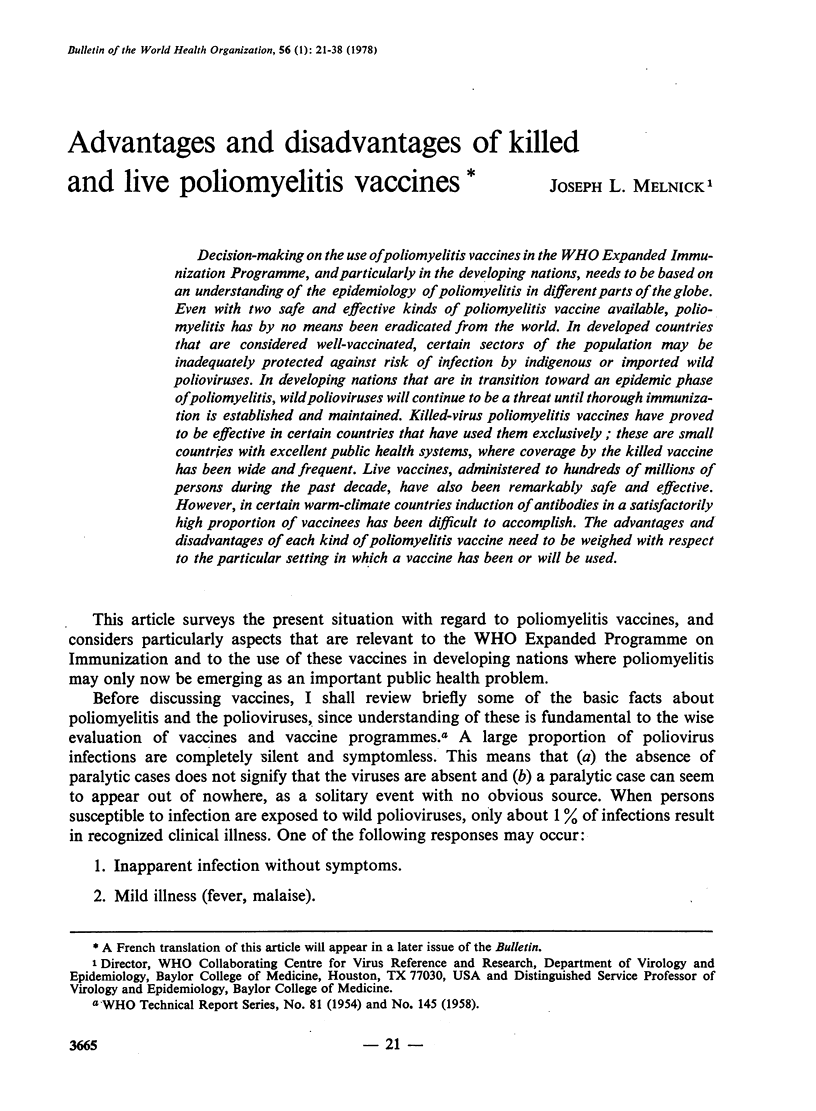
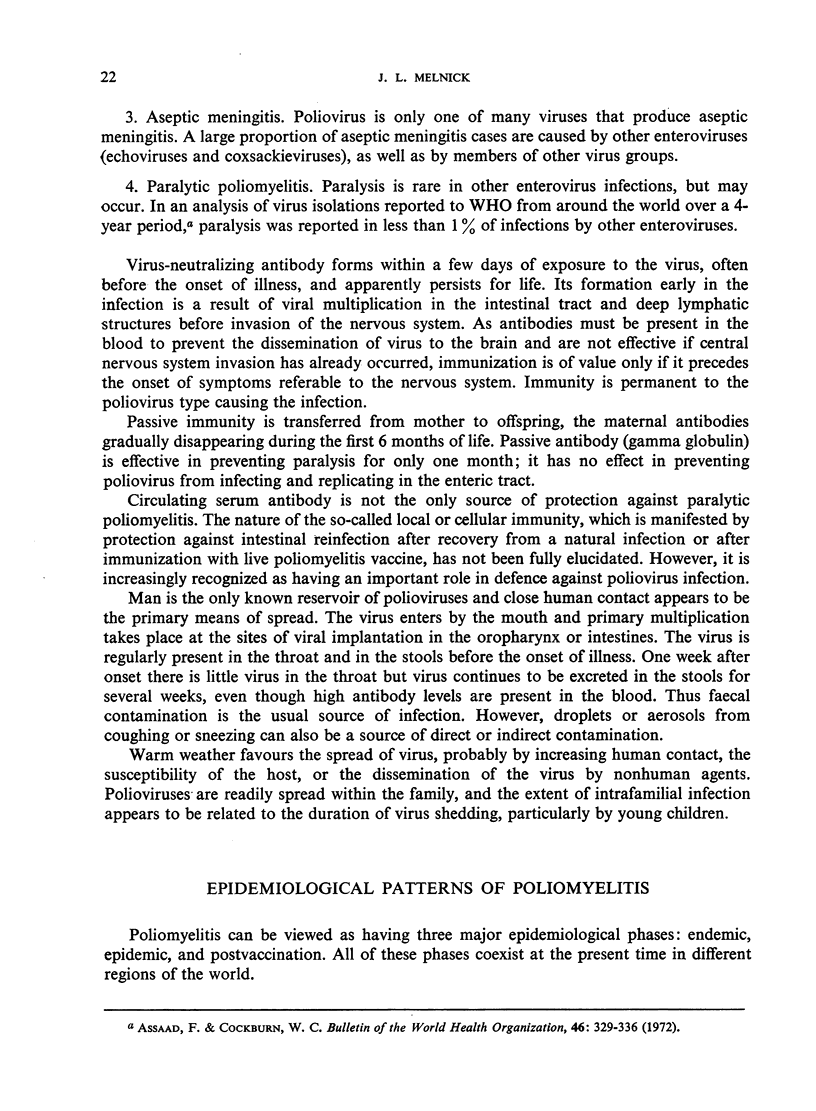
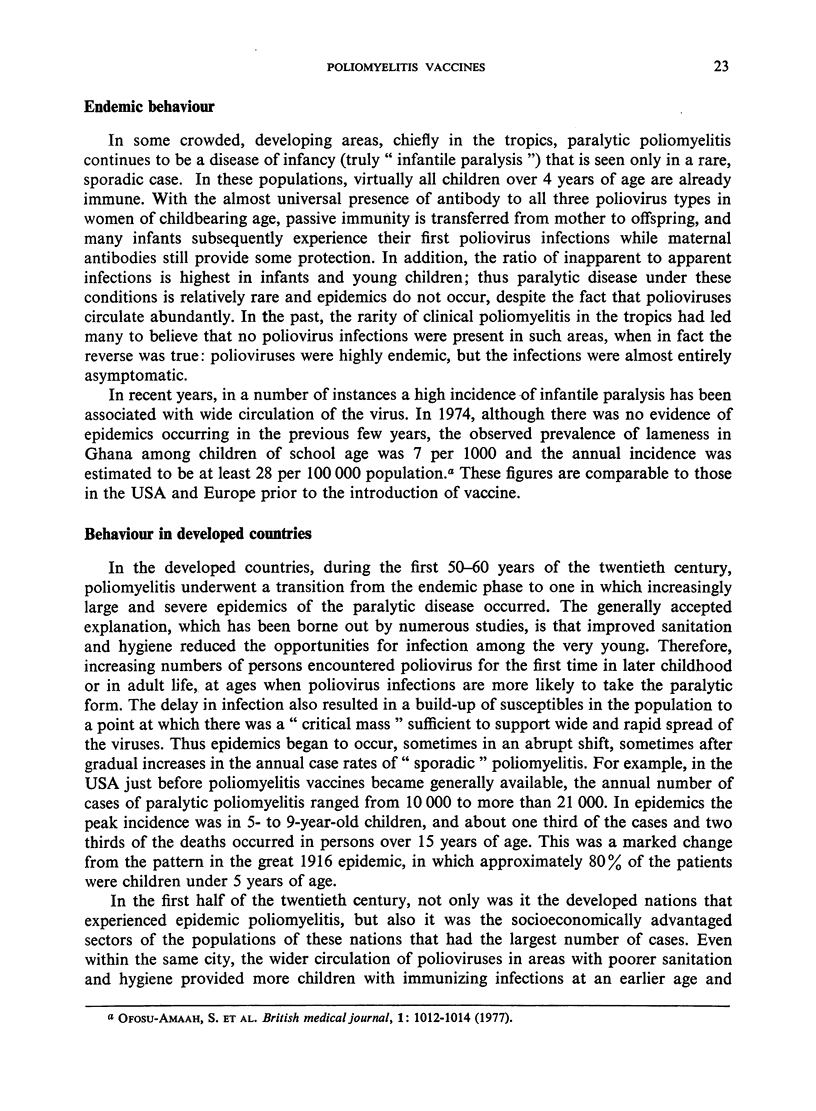
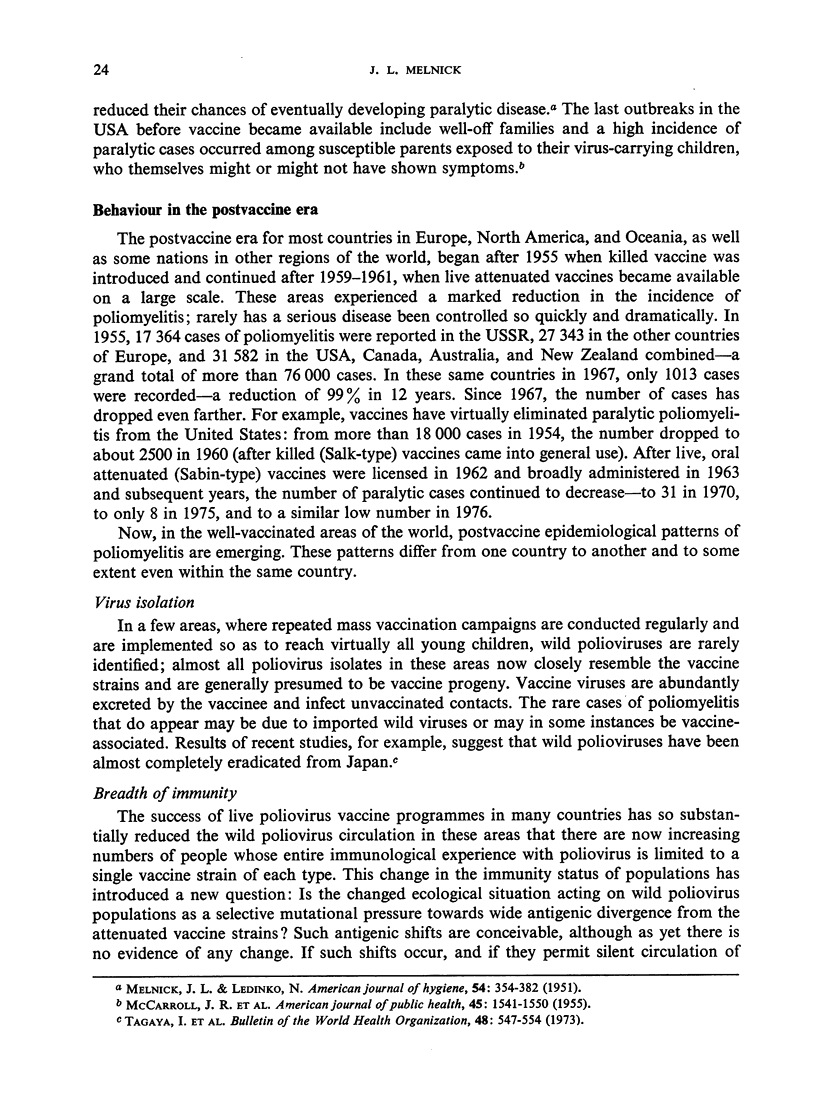
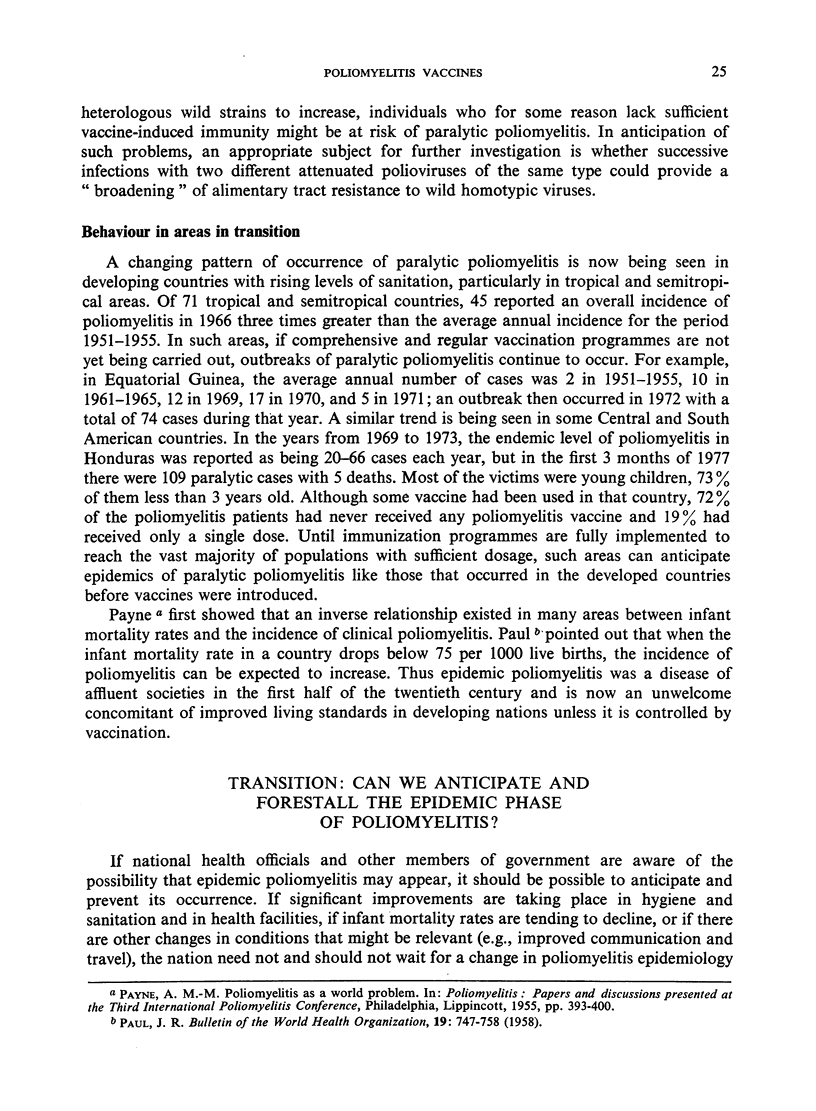
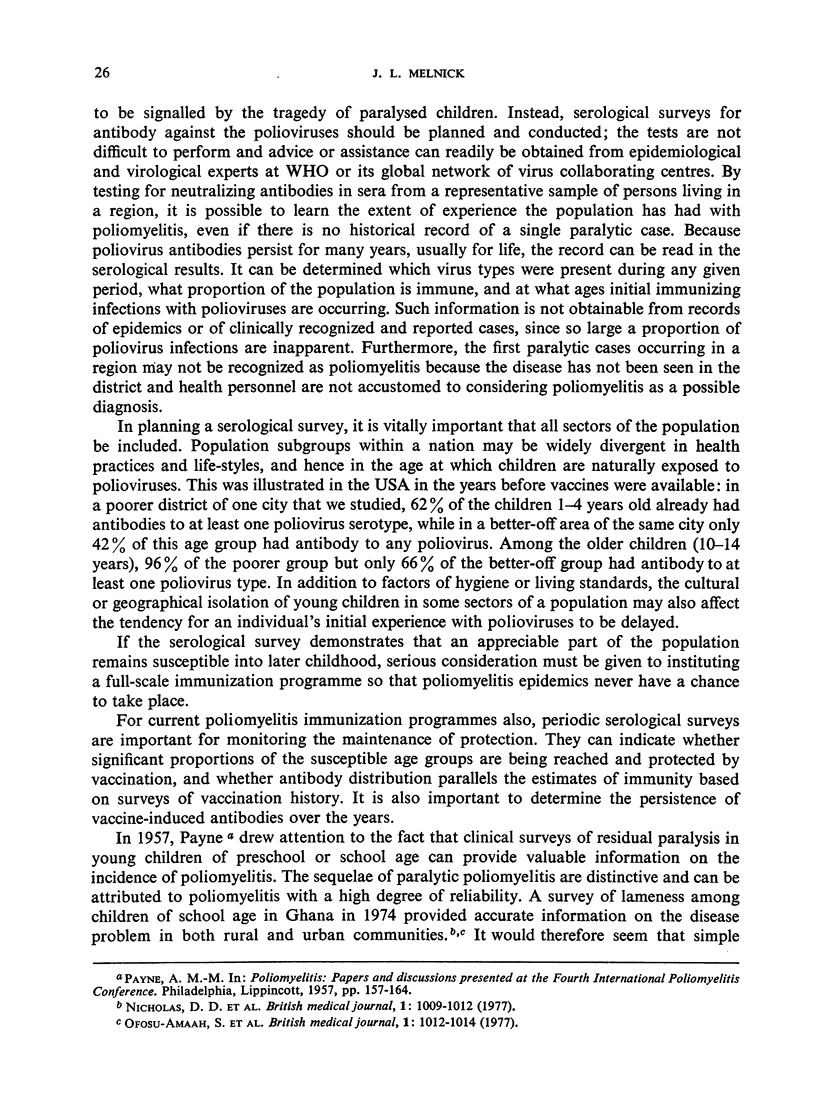
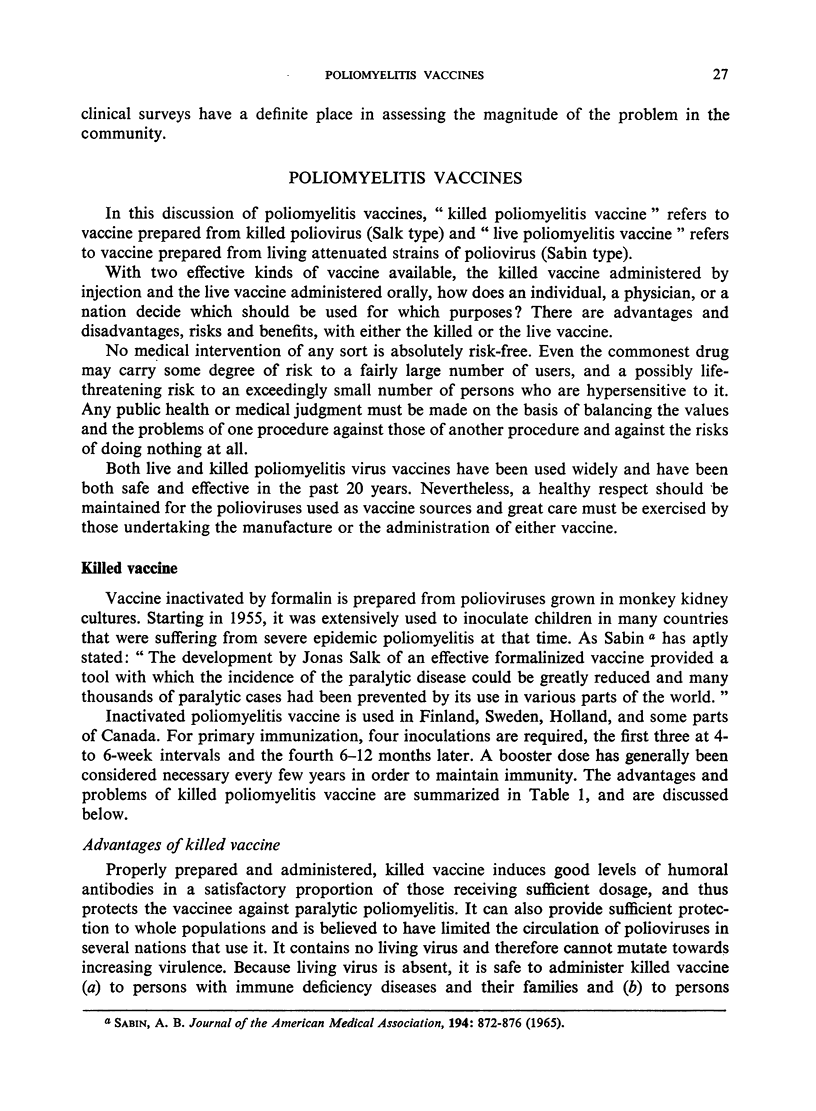
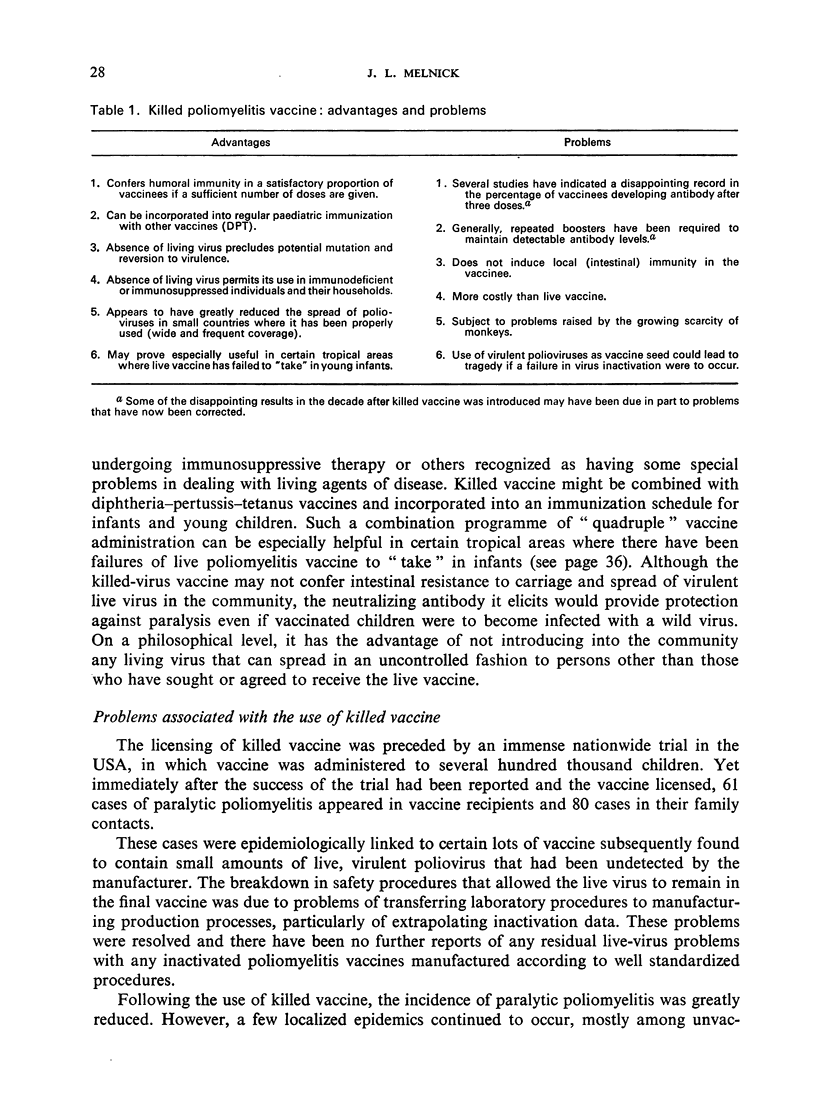
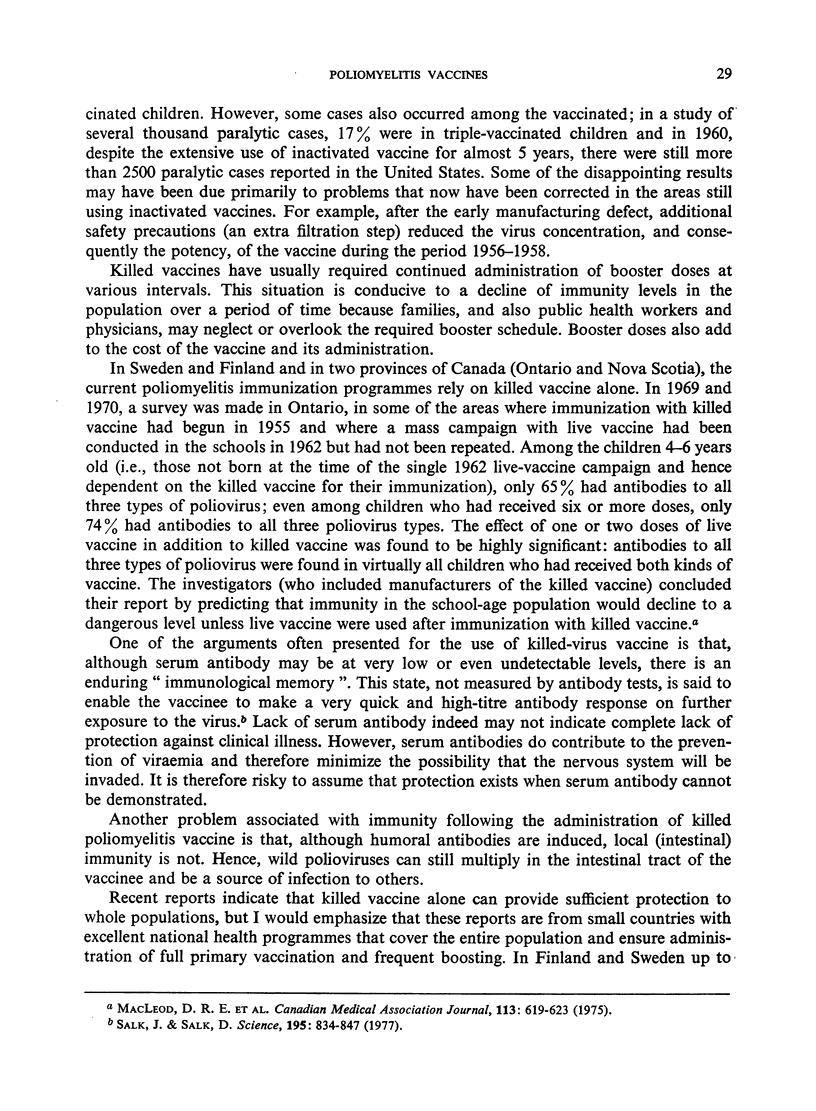
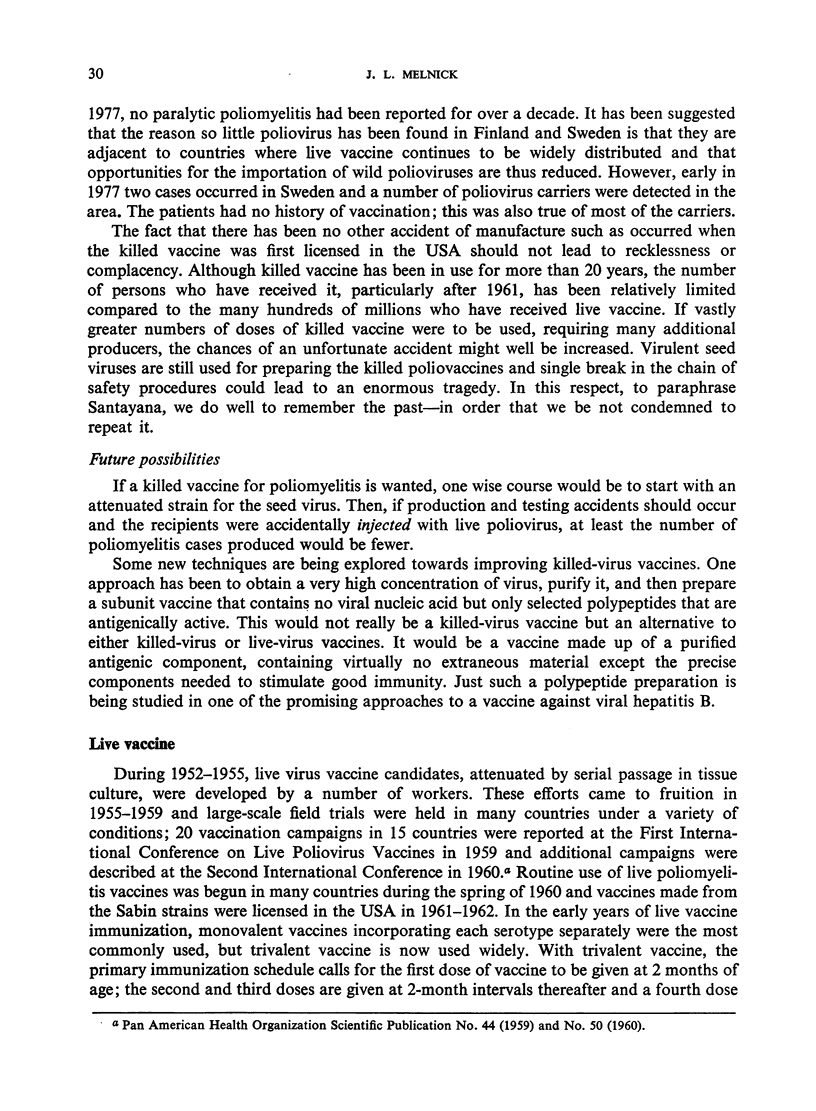
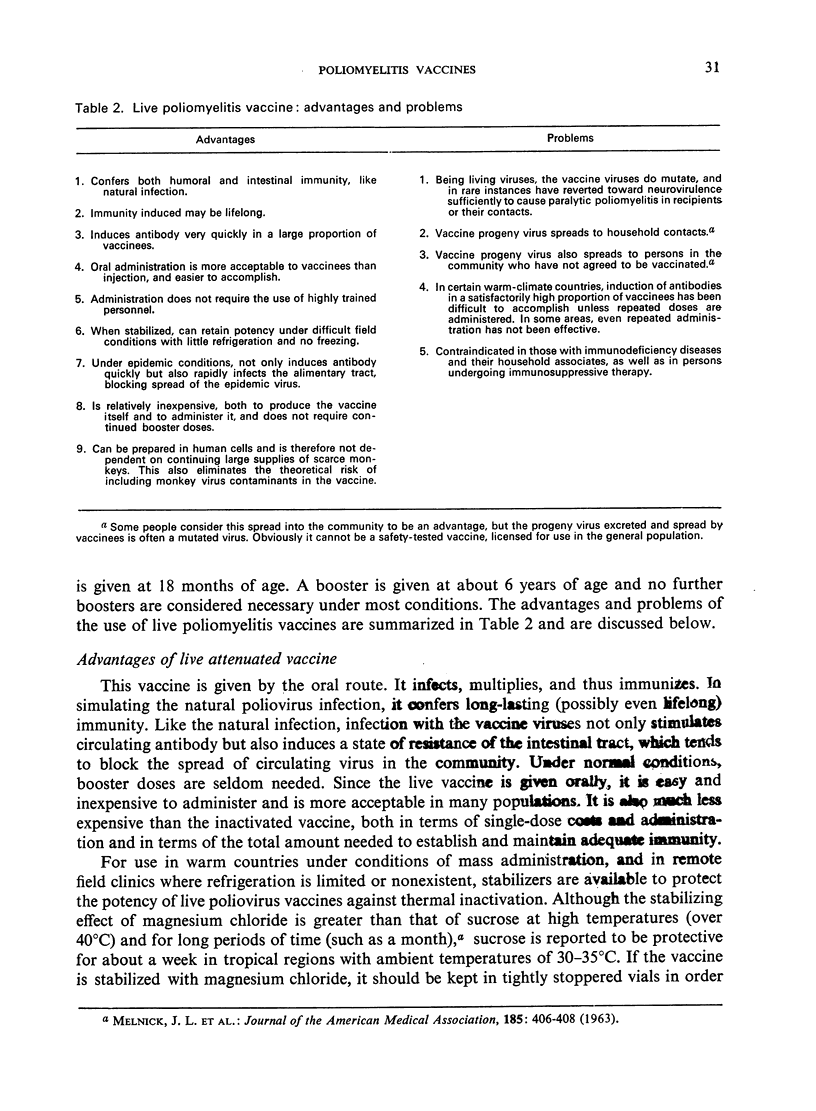
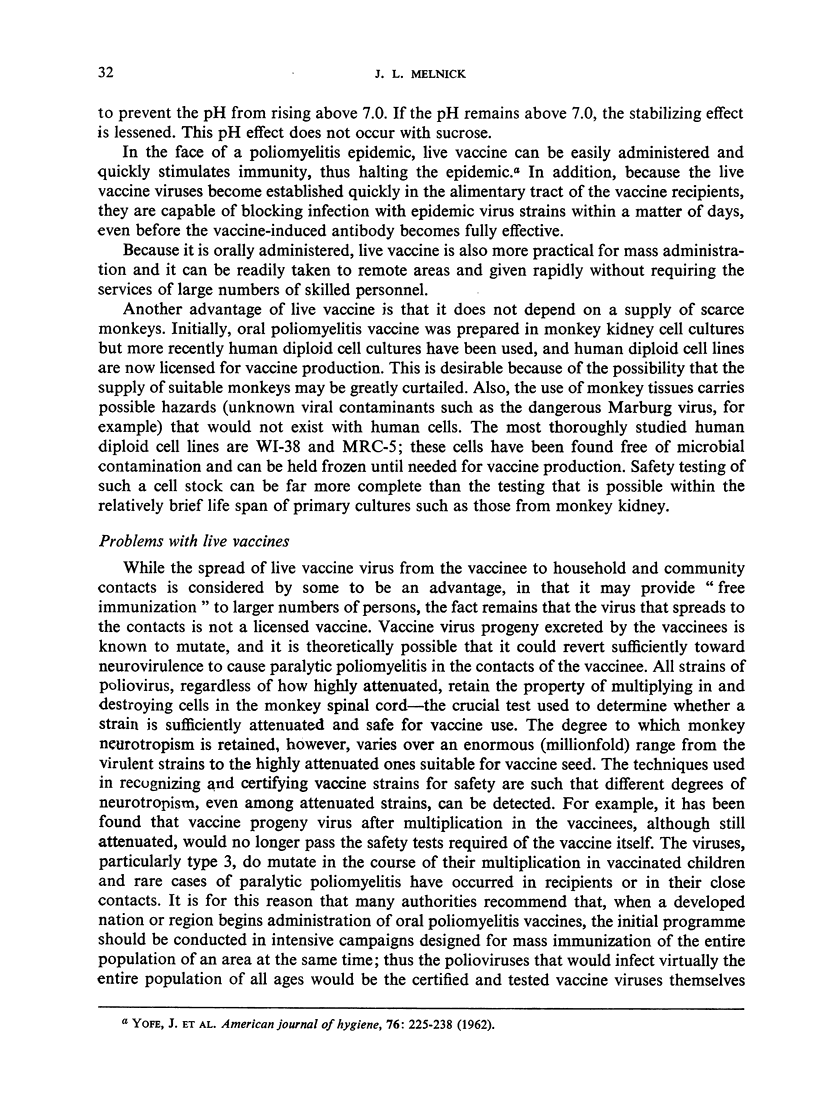
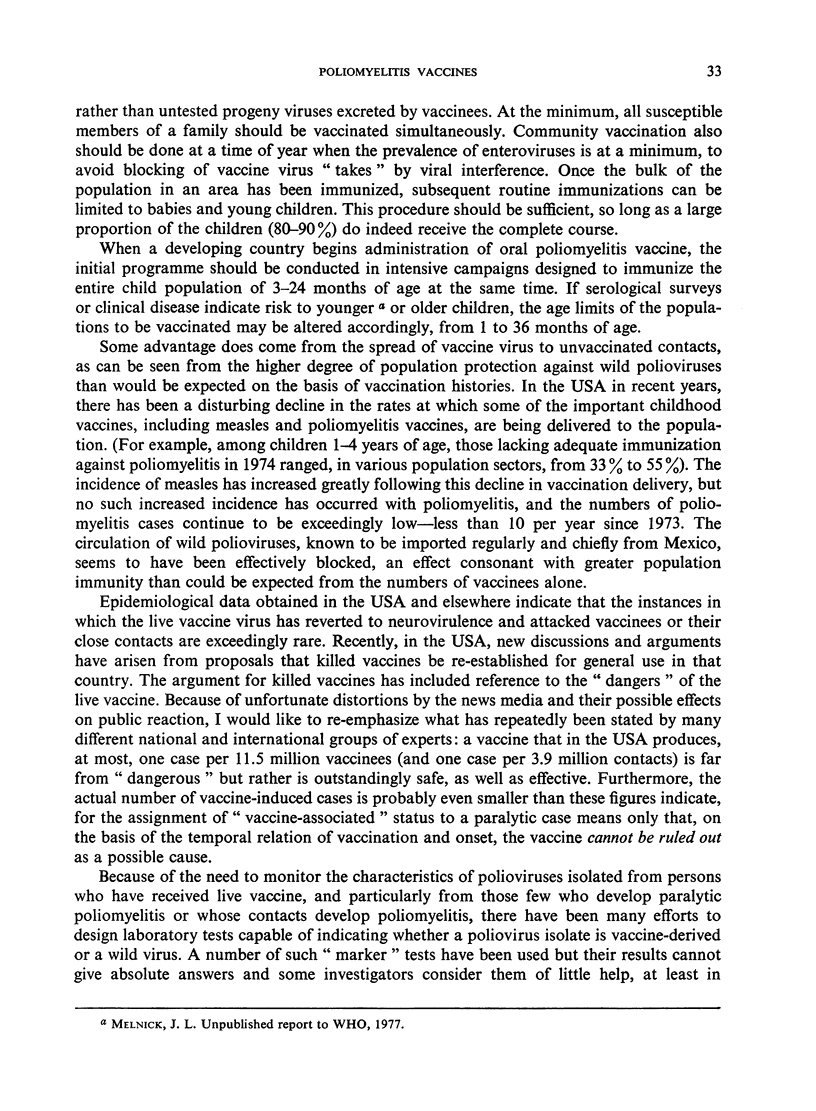
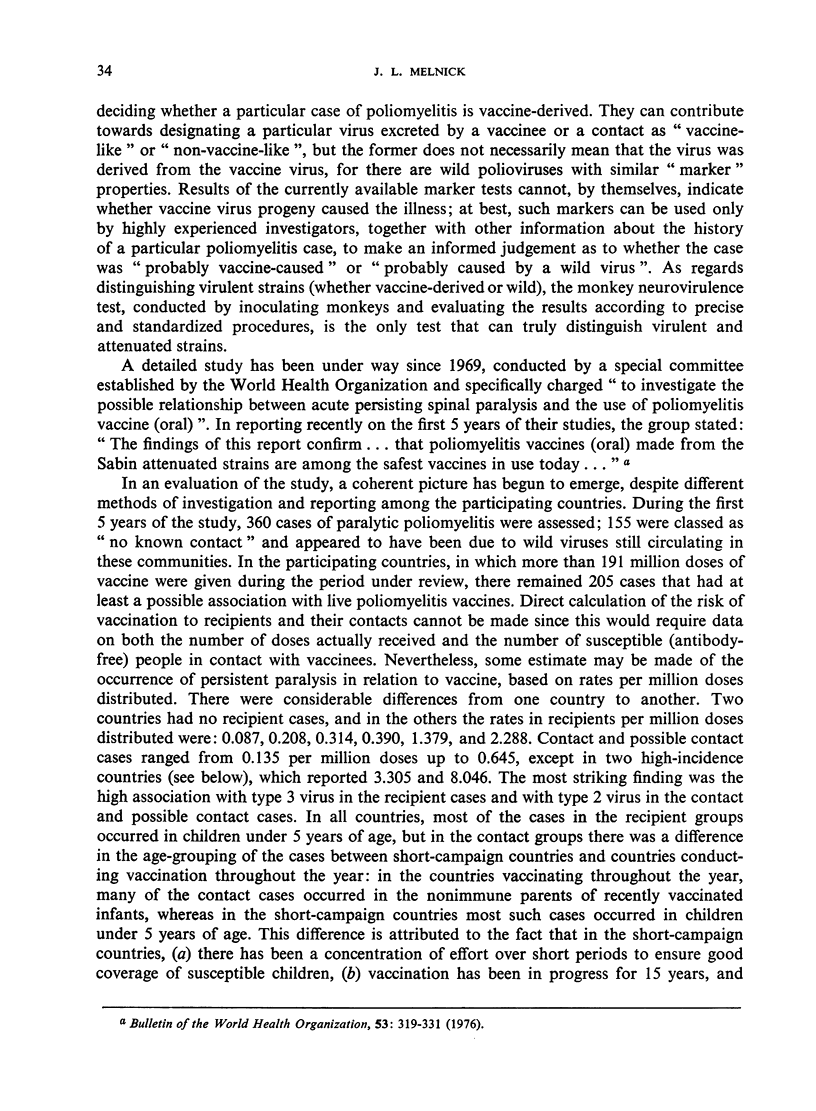
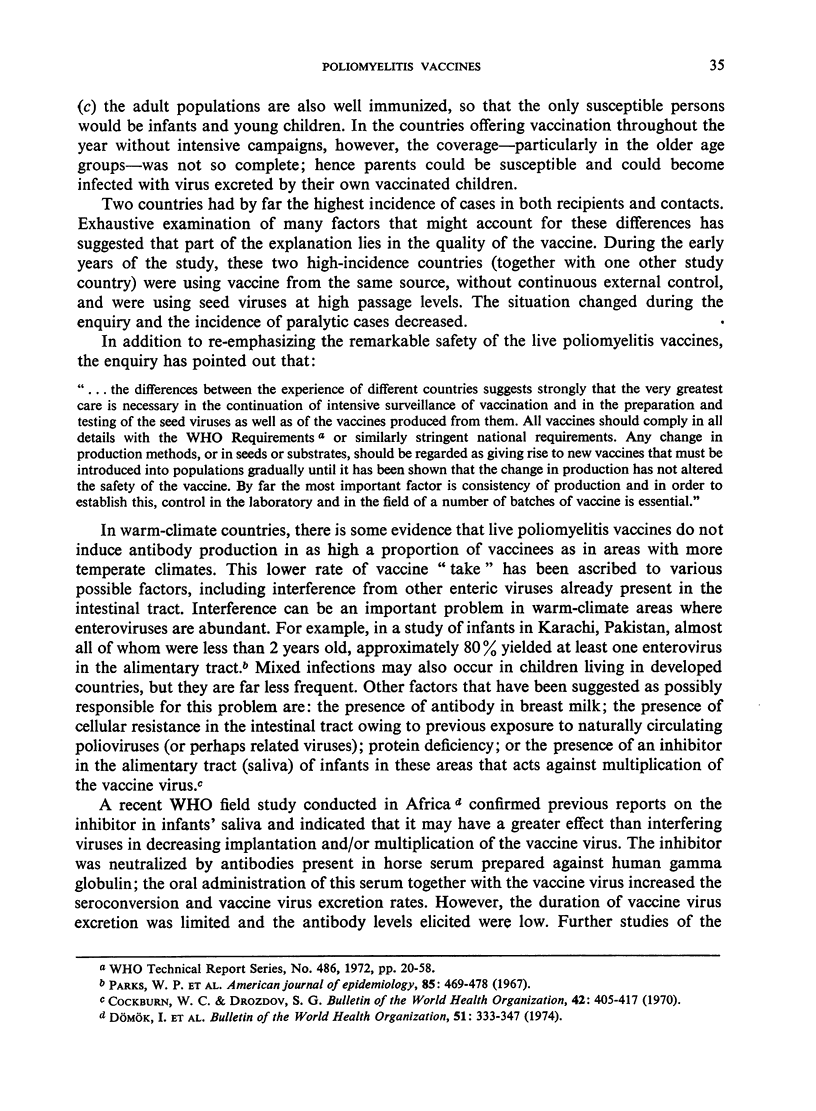
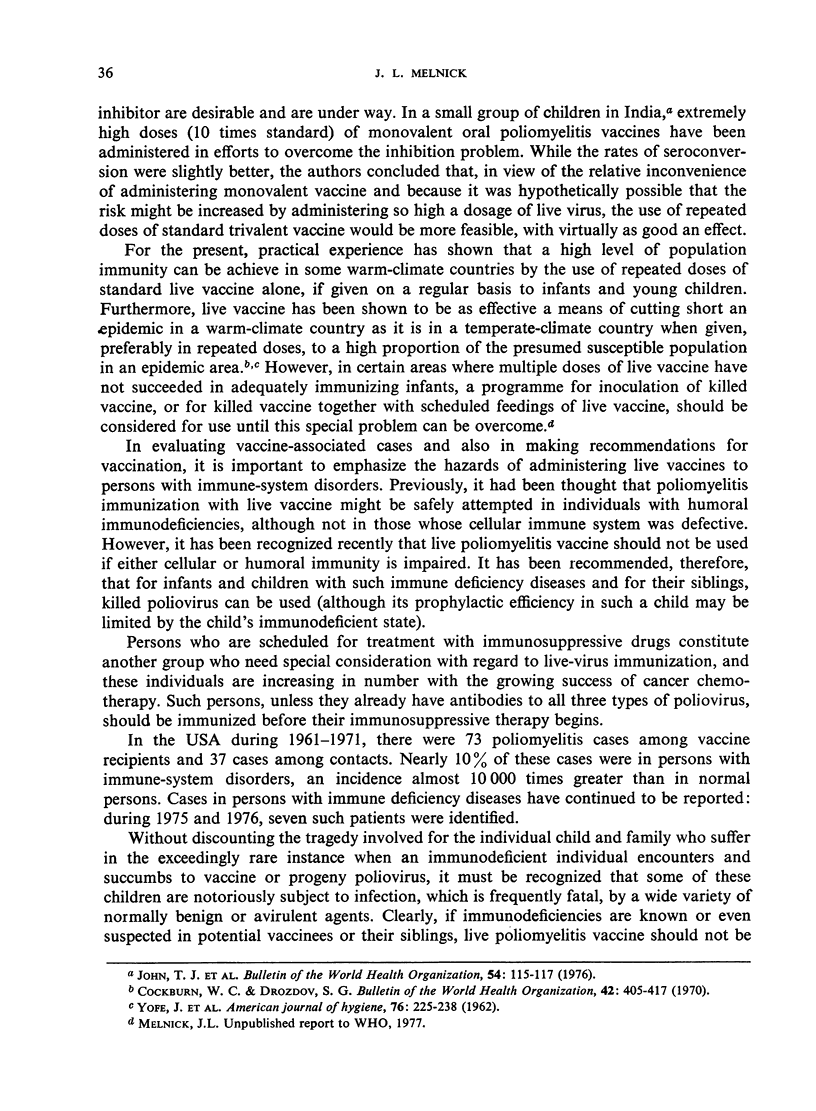
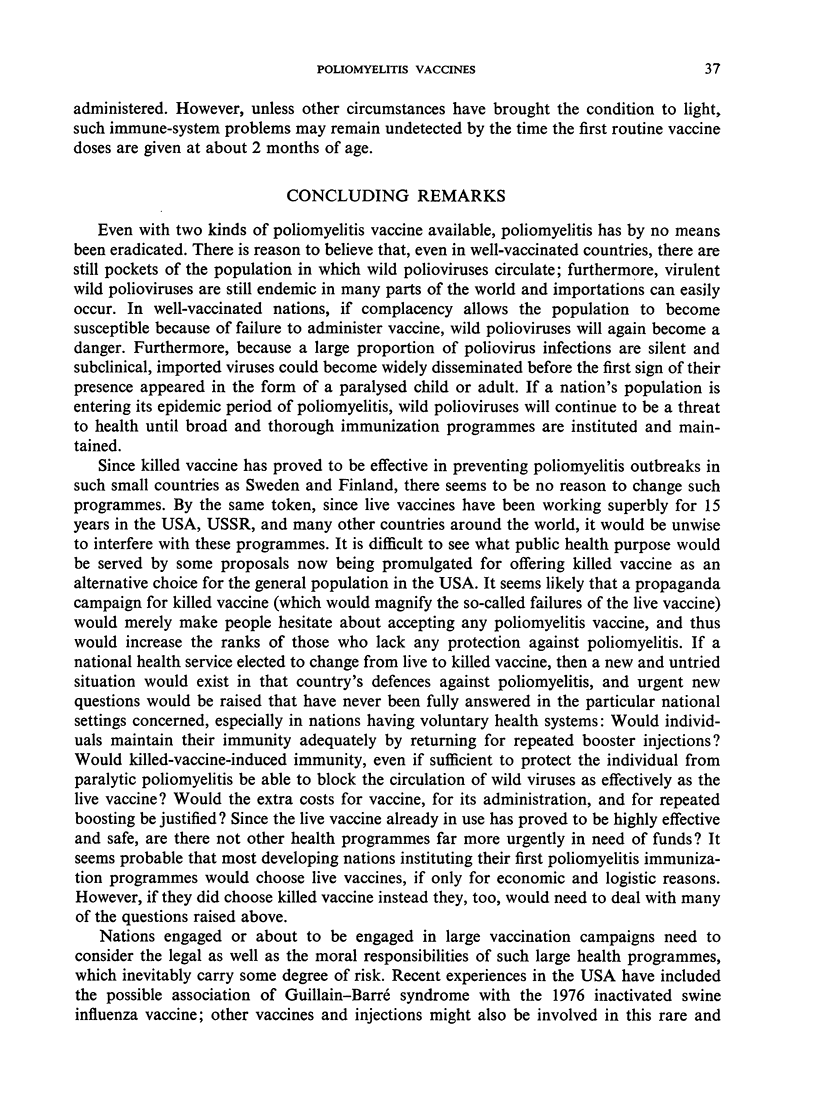
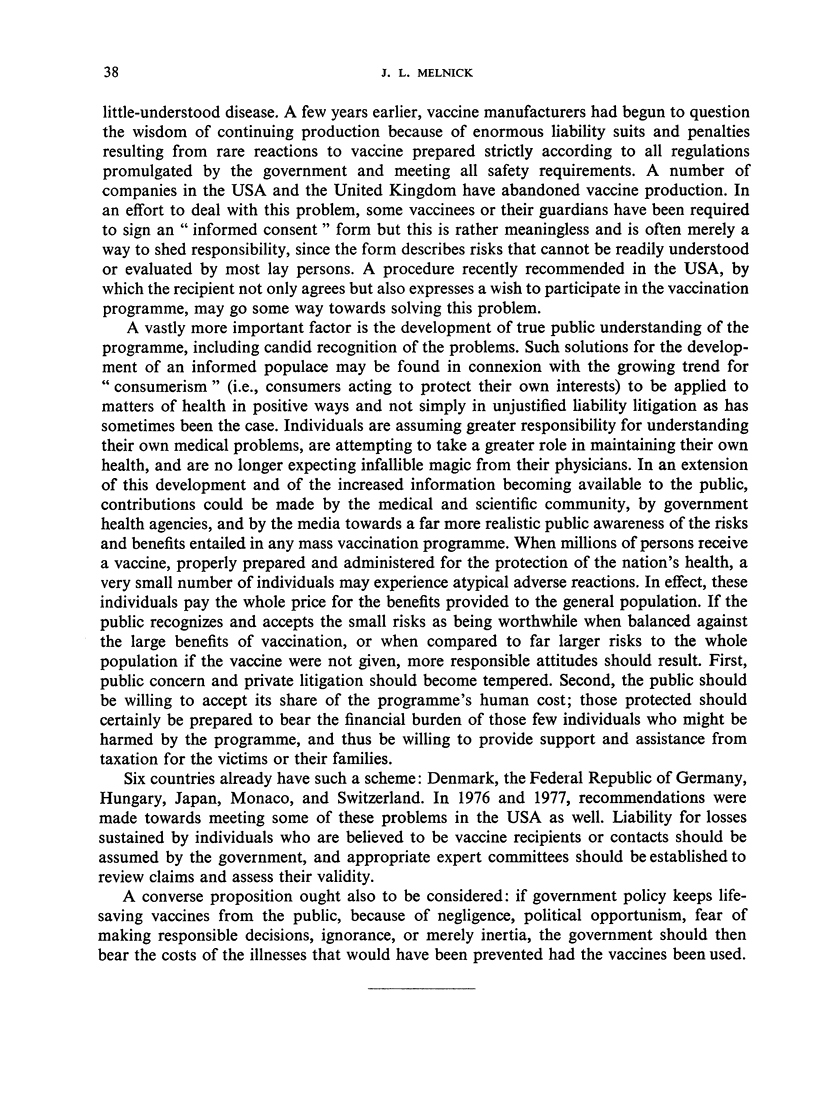
Selected References
These references are in PubMed. This may not be the complete list of references from this article.
- Assaad F., Cockburn W. C. Four-year study of WHO virus reports on enteroviruses other than poliovirus. Bull World Health Organ. 1972;46(3):329–336. [PMC free article] [PubMed] [Google Scholar]
- Cockburn W. C., Drozdov S. G. Poliomyelitis in the world. Bull World Health Organ. 1970;42(3):405–417. [PMC free article] [PubMed] [Google Scholar]
- MELNICK J. L., LEDINKO N. Social serology; antibody levels in a normal young population during an epidemic of poliomyelitis. Am J Hyg. 1951 Nov;54(3):354–382. doi: 10.1093/oxfordjournals.aje.a119492. [DOI] [PubMed] [Google Scholar]
- Ofosu-Amaah S., Kratzer J. H., Nicholas D. D. Is poliomyelitis a serious problem in developing countries?--lameness in Ghanaian schools. Br Med J. 1977 Apr 16;1(6067):1012–1014. doi: 10.1136/bmj.1.6067.1012. [DOI] [PMC free article] [PubMed] [Google Scholar]
- Ofosu-Amaah S., Kratzer J. H., Nicholas D. D. Is poliomyelitis a serious problem in developing countries?--lameness in Ghanaian schools. Br Med J. 1977 Apr 16;1(6067):1012–1014. doi: 10.1136/bmj.1.6067.1012. [DOI] [PMC free article] [PubMed] [Google Scholar]
- Parks W. P., Queiroga L. T., Melnick J. L. Studies of infantile diarrhea in Karachi, Pakistan. II. Multiple virus isolations from rectal swabs. Am J Epidemiol. 1967 May;85(3):469–478. doi: 10.1093/oxfordjournals.aje.a120709. [DOI] [PubMed] [Google Scholar]
- Salk J., Salk D. Control of influenza and poliomyelitis with killed virus vaccines. Science. 1977 Mar 4;195(4281):834–847. doi: 10.1126/science.320661. [DOI] [PubMed] [Google Scholar]


